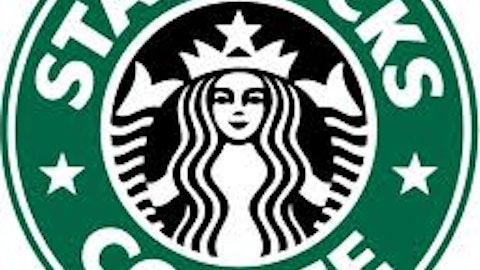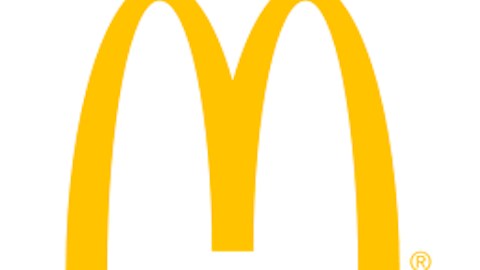When a stock is popular, and enough investors believe in its future, sometimes it takes more than just one piece of bad news to get people’s attention. When that same company has iconic brands and has been around for a while, multiple problems might pop up before investors react appropriately. I wrote about the challenges facing Yum! Brands, Inc. (NYSE:YUM) in January (more about that in a minute), and as of the company’s recent earnings, things have only gotten worse. The stock is only down slightly in the last month, even though the company and analysts are saying there is a problem.

Investors in YUM Brands Inc. (YUM) have seen their company report surprisingly good earnings growth over the last few years. Same-store sales have been strong, particularly in China. For a restaurant chain with over 30,000 restaurants, this type of performance is almost unheard of.
When you add in the fact that YUM Brands competes with names like McDonald’s Corporation (NYSE:MCD), Starbucks Corporation (NASDAQ:SBUX), and Chipotle Mexican Grill, Inc. (NYSE:CMG), this performance is even more impressive. The company’s history of good performance has unfortunately created unrealistic expectations going forward.
Near the end of last year, the challenges for YUM Brands began to set in. The company reported worse same-store sales in China than investors were expecting, and the stock dropped about 10%. While it’s true the stock is still about 13.5% below its short-term high, it’s not enough. When I looked at the situation in January, YUM Brands looked overvalued relative to its peers. The company’s price-to-book value was particularly telling with shares fetching 13.82 times their stated book value.
Since investors could buy Starbucks for 7.96 times book, McDonald’s for 6.49 times, or Chipotle for 6.97 times, YUM Brands seemed rich by comparison. However, the company’s EPS growth rate was expected to be 14.27% for the next few years, and that helped to offset the concerns a bit.
What’s In That Chicken?
Since my last post, the company’s problems in China have gotten worse. The company’s KFC division has been the target of charges that, “excessive levels of antibiotics” were found in some chicken that KFC China purchased. This negative news caused same-store sales at KFC China to drop 8% in the fourth quarter. The company went as far as to place a statement in bold in their news release saying, “The current negative sales trend in our China KFC business will adversely impact 2013 EPS.”
Since the Chinese division represents over 50% of YUM Brands revenue, and same-store sales will be down for most of the year, this is a very big deal. I’m sure some investors are thinking this is a short-term challenge, and the company will recover. While that might be true over the next few years, there are three issues that suggest the stock is overvalued at the current time.
3 Problems
The first issue is, the company’s operating margin is lower than any of its peers. In the current quarter, McDonald’s led the way with an operating margin of 31.98%. Starbucks and Chipotle reported operating margins of 16.6% and 14.62%, respectively. By comparison, YUM Brands’ operating margin was just 12.16%. If YUM Brands isn’t able to improve its operating margin going forward, even better sales growth won’t mean as much in terms of earnings growth.
The second issue is with YUM Brands‘ balance sheet. In the restaurant industry, one constant risk is taking on too much debt. While I’m not suggesting that the company is in trouble, the difference between their balance sheet and the competition can’t be ignored. Using the debt-to-equity ratio, YUM Brands has the highest level of debt-to-equity at 1.30. McDonald’s has a stronger balance sheet at 0.92, and Starbucks and Chipotle are in a different league with debt-to-equity ratios of 0.11 and 0, respectively.
Last but not least, YUM Brands seems overvalued if you look at their earnings and dividend, relative to their projected P/E ratio. If we use the PEG+Y ratio to compare YUM Brands to their peers, the stock seems expensive. The PEG+Y ratio is like an inverted PEG ratio. You take the company’s expected growth rate, add the current yield, and divide by the P/E ratio. This helps investors compare companies that pay dividends by taking this yield into account.
With a PEG+Y ratio, the higher the number the better. A company with a low ratio is relatively more expensive. YUM Brand’s (NYSE:YUM) PEG+Y ratio is 0.67. By comparison, only Chipotle has a lower ratio at 0.66. Relatively speaking, McDonald’s at 0.75 or Starbucks at 0.80 look like much better values.
The challenge for YUM Brands is predicting what their earnings growth will be. Just a month ago, analysts thought EPS would grow by over 14%, today that number is down to 12%. If the problems in China persist longer than the company anticipates, the number could drop even further. For a stock selling for over 21 times 2013 full year estimates, investors are ignoring the obvious. YUM Brands seems overvalued.
The article These 3 Numbers Say This Stock Is Overvalued originally appeared on Fool.com and is written by Chad Henage.
Copyright © 1995 – 2013 The Motley Fool, LLC. All rights reserved. The Motley Fool has a disclosure policy.




